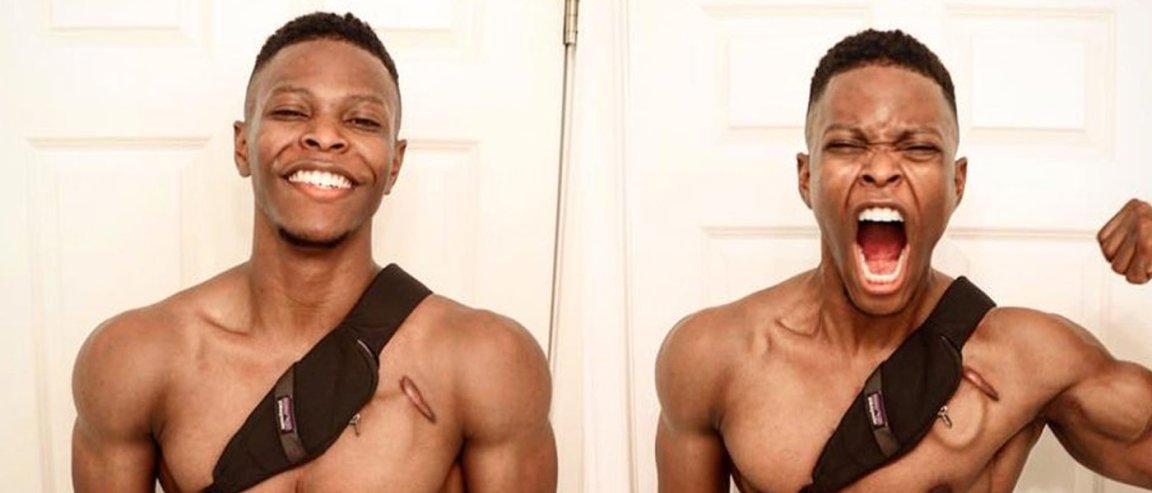
The (Not Quite) Artificial Heart
As a professional fitness model and bodybuilder, 26-year-old Andrew Jones lives an active lifestyle and regularly works out in the gym. No big deal.
Oh, but have we mentioned he has no pulse?
Yup! Jones does not have a self-functioning heart. To keep himself alive, he carries around with him at all times an artificial heart pump and pacemaker attached to a backpack, and has to plug himself into the wall outlet every night to charge the lifesaving hardware.
In 2012, he was diagnosed with cardiomyopathy — a disease which affects the efficiency of the heart to pump blood. While waiting for a full heart transplant, he was given a device to help his heart pump blood around his body. This equipment is called a Left Ventricular Assist Device (LVAD), consisting of a battery pack and a computer, which power and control the technology assisting his heart. An LVAD is a portable device that allows patients to continue doing their normal activities while they await transplant.

A similar scenario happened to Stan Larkin – who was also diagnosed with cardiomyopathy and had to carry around an artificial heart in a backpack while waiting for a full heart transplant. The difference is that Larkin had his heart removed and was fitted a Syncardia device to allow for circulation.
Just like Larkin who had managed to continue playing basketball even with the 6-kg (13.5-pound) device strapped to his body, Jones continued working out in the gym after having the LVAD implanted.
The Man With A Big (Artificial) Heart
Despite living with an artificial heart, Jones tried to keep a positive outlook on life.
In the clip above, Jones shares, “at first, I was upset about having an artificial heart. And then there was that moment where I realize that this is my life for now. Either I can dwell and feel sorry for myself, or I can continue doing the things that I love to do, the best way I can. And I haven’t stopped.”
Jones has founded Hearts at Large, a charity aimed to raise awareness on the issues of life-saving transplants and to offer support and encouragement to transplant patients.